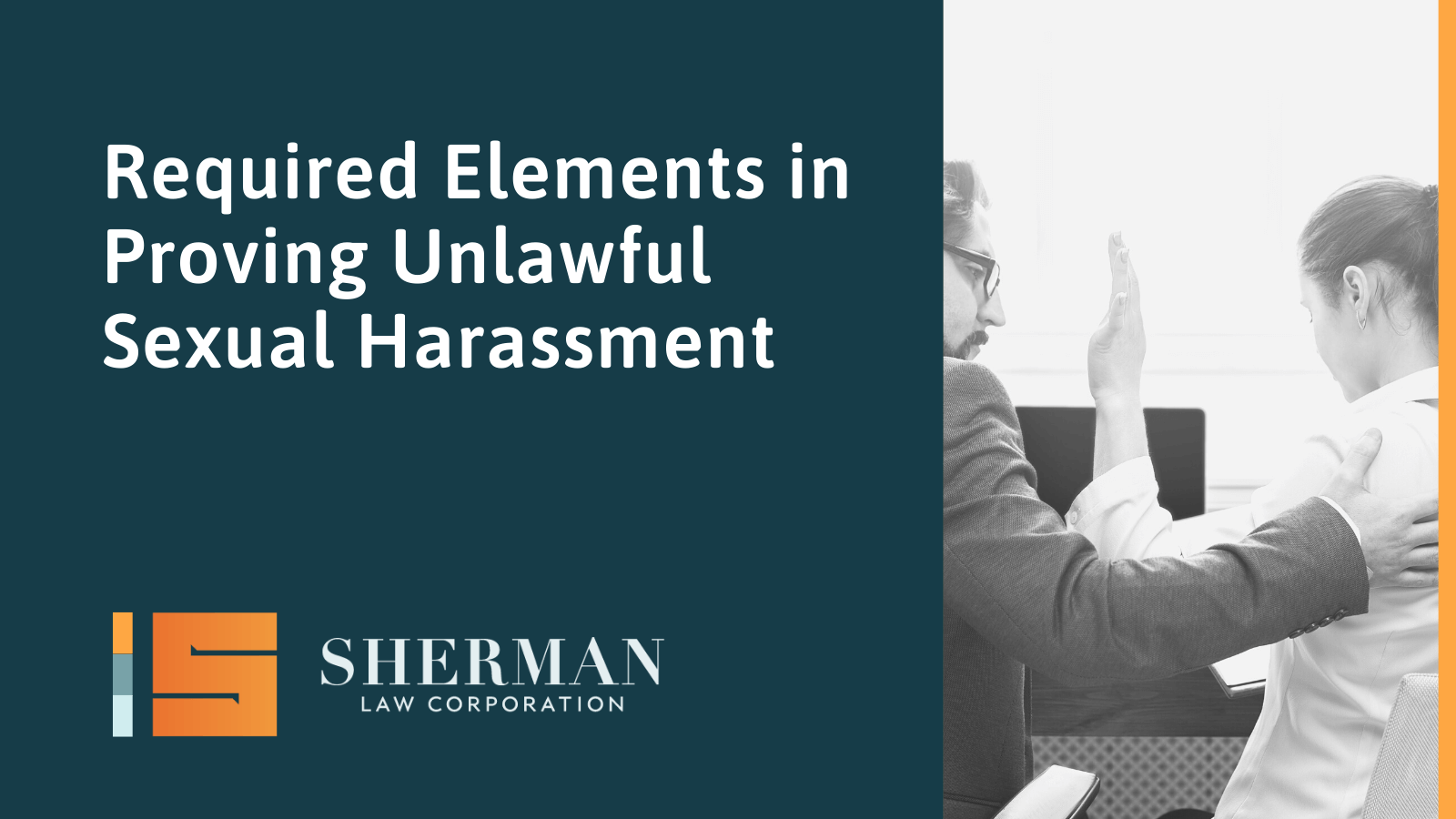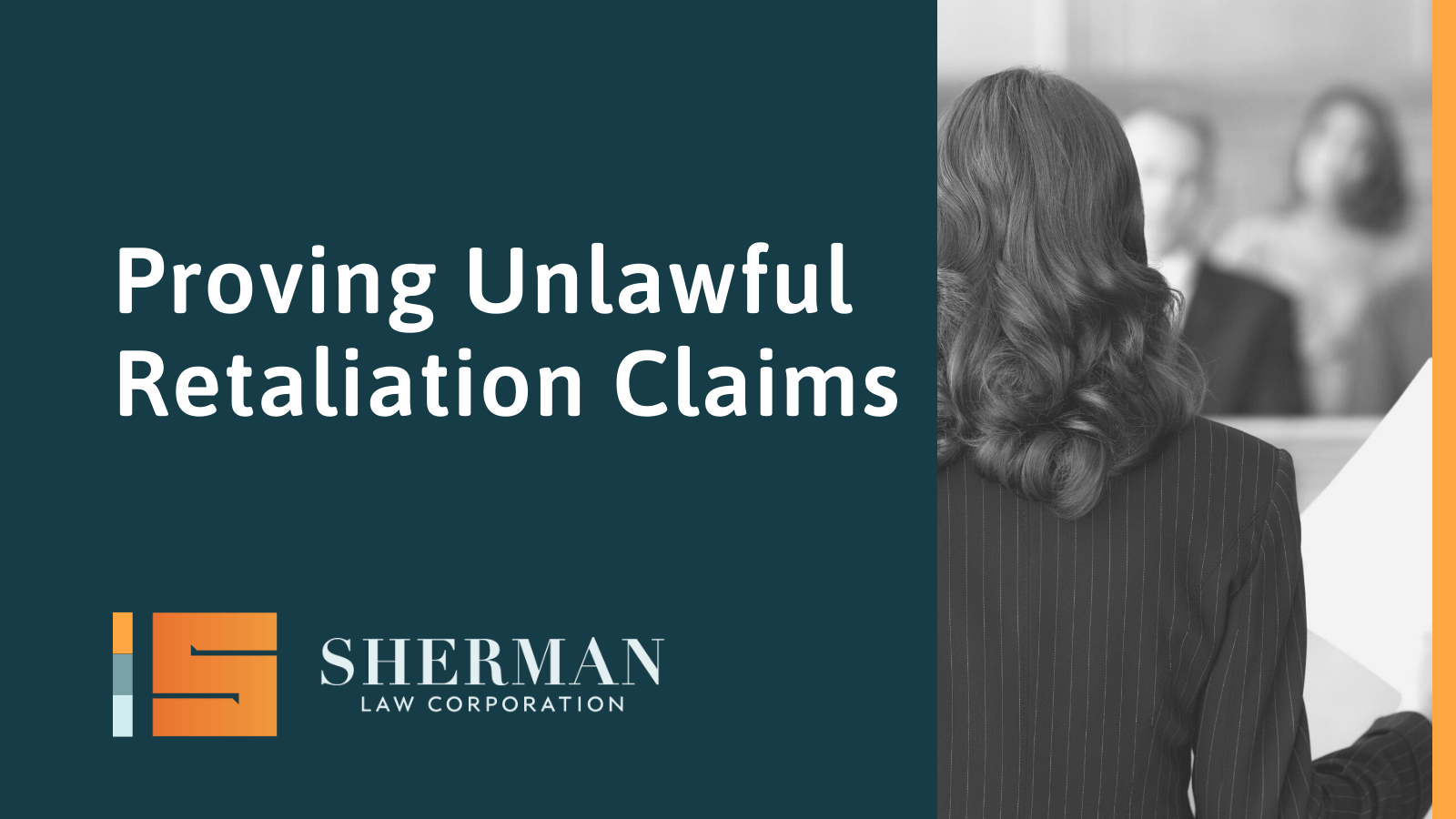
Unlawful sexual harassment is unwelcome sexual conduct (physical, verbal, written, or otherwise) that is either severe or pervasive and creates a hostile working environment, objectively and subjectively, to that employee causing damages.
In this blog, California employment lawyer Lisa Sherman addresses each of the six elements of a sexual harrassment claim and what employers should do if they’re facing this type of claim.
-
Sexual conduct
The conduct at issue must be sexual in nature. This element can be an issue when the alleged conduct seems innocuous and non-sexual, but the complainant claims that the communication was intended to be sexual based on the manner in which the parties communicate with one another and/or the context of the entire conversation.
For example, employees joking at a car dealership were alleged to have said to one another, “He’ll take it in the brown” in front of a female employee, which seemed to be innocuous to me in reference to a color of a car, until the employees testified of its underlying sexual meaning.
-
Un-welcomeness
The conduct must be unwelcome. While a victim does not have to say “no” or “stop,” this element focuses on how the victim responds to the alleged sexual conduct.
The context of the entire exchange and the relationship between the complainant and the accused are examined under a microscope. Even if it becomes a “he said/she said,” the evidence that becomes crucial is what others observe and written communications including, emails, texts, pictures etc., even if the conduct is after work.
This always comes up when two employees in the workplace start off friendly and joking. Something happens to upset one of the employees, and the other employee continues to joke unaware. Or two employees are dating and after they break up, any conduct after is unwelcome to one of them which is actionable.
-
“Severe or Pervasive Conduct”
The conduct must be severe or pervasive. The critical lesson here is that not every sexual joke or touch, even if unwelcome and clearly inappropriate in the workplace, is unlawful.
To be unlawful, all of the alleged sexual conduct is examined in total to determine if all of the conduct considered together rises to the high bar set by state and federal laws.
If the alleged sexual harassment boils down to one interaction, that conduct will only be unlawful if it is severe. For example, one incident of date rape is severe, while one slap of a buttocks may not qualify.
Pervasiveness looks at how often the conduct occurs so while one physical touching may not be severe enough on its own, combined with daily comments, for example, it may meet the pervasive element.
Examination of the alleged conduct from when it began to when it ended, how often the two parties interacted with one another, the frequency of the alleged conduct during this timeframe, and the conduct itself, are all considered in determining if this element is met.
-
Objectively Offensive Conduct
The alleged conduct must create a hostile working environment that would be offensive to a reasonable person in the victim’s position. This is an objective standard to exclude claims by either a victim who is overly sensitive or conduct that most persons would find innocuous.
So, if the victim is a female, would a reasonable woman in the victim’s shoes consider the alleged conduct so offensive that she, too, could not work under these conditions?
If the victim is a male, then the same analysis is done as to a reasonable man. To illustrate this, a female plaintiff alleged a handful of comments by her female supervisor that either in context did not seem to be sexual or were innocuous. The court dismissed her claims on the objective element – no reasonable woman in her position would consider this conduct to be so offensive that she could not work there.
-
Subjectively Offensive Conduct
The alleged conduct must create a hostile working environment that was in fact offensive to the victim.
For example, evidence presented at trial showed that the alleged conduct – sexual comments and alleged touching – was not only welcomed by the plaintiff, who boasted of sexual escapades, and that he was not at all offended by alleged comments by his female supervisor.
-
Alleged Conduct Caused the Employee Damages
The employee must prove damages from the alleged harassment.
It is not enough to be upset and have hurt feelings, but rather they must present actual monetary loss such as missed work or treatment for severe emotional distress. If the employees are seeking damages for emotional distress and/or economic damages, they waive their right to privacy as to any other pre-existing or concurrent psychological treatment and financial privacy.
Contact Lisa Sherman Today
The same elements apply for other protected classes. While employees often use the term “harassment,” not all conduct qualifies. Nonetheless, California employers are required to investigate all such claims.
At the Sherman Law Corporation, we help employers eradicate claims by opportunistic employees so that California businesses can get back to work. For more information on the required elements in proving unlawful sexual harassment, feel free to call Lisa Sherman at (323) 488-2087 or email lisa@sherm-law.com.




